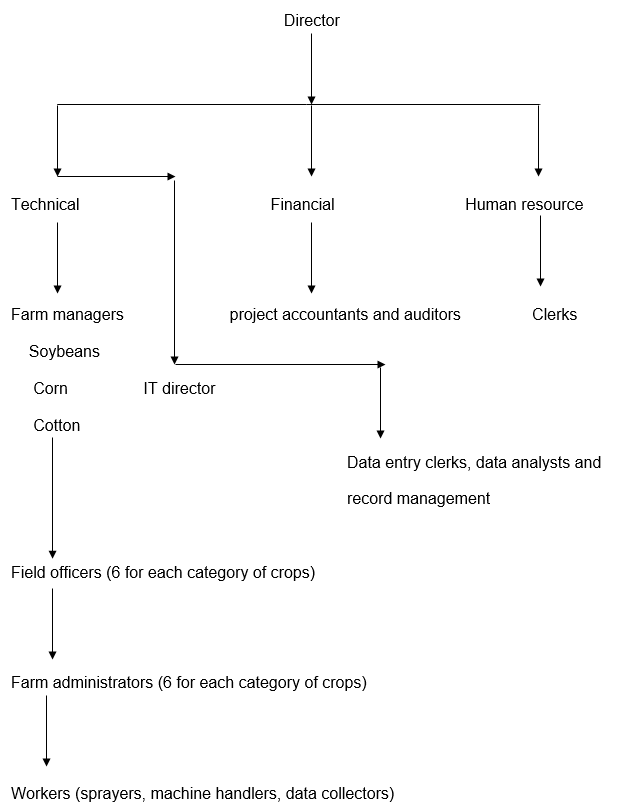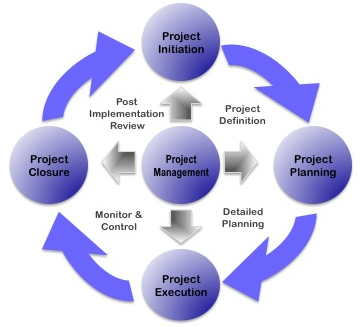Scope of the project
Monsanto Company has been involved in several agricultural improvement activities. As a firm that gets its returns through offering agricultural solutions, Monsanto feels that it has an obligation to support this sector wholesomely. Monsanto aims to establish an effective model of agriculture where sustainability is emphasised. Support to the farmers through several infrastructure forms the pillar of its activities. In this regard, Monsanto has launched the “sustainable yield initiative – SYI, a project to help in enhancing the development of agricultural activities around the globe (Monsanto yesterday, 2011).
Through public, private partnerships, Monsanto seeks to broaden the production capacity of farmers by 2030. The project entails an increased production of three crops: cotton, corn, and soybeans. Establishment of effective agronomic models shall form the foundation of this project. This would be achieved through distribution of improved seeds, establishment of good farming methods, and training of farmers who deal with these three crops to adopt proper and efficient farming models to increase the yields. The concept of the project is to identify the yield quotients of different seeds, different farming methods, and farm practices at the Monsanto learning centre (Monsanto yesterday, 2011).
Monsanto expects that the variables involved in the production of corn, soybeans, and cotton play a greater role in the yields of these crops. The company also appreciates that the demand for food in the globe is becoming high and thus the need to improve their production. Implementation of the project is to take place over the next ten years. Monsanto is keen to apply practical approach to the theoretical knowledge in the project to advance the production capacity of the farmers engaging in the three crops earlier mentioned in this work
Project schedule
Sustainable yield initiative began in 2010. The projected duration of the project study and analysis was ten years after which the company would give recommendations.
Human resource plan
The magnitude of the project takes into cognizant the vast amount of human resource capital. The human resource plan of the entire project is as described in the discourse below
Director: the overall director supervises the running of the whole project. He gets the details from the three deputies appointed under him. These include such portfolios like the finance director who handles issues of finance, technical director involved with the actual yield measurements and the human resource director.
Under the technical directors, other staff members are involved in the study of the crops over the ten-year project. These are the farm managers. They manage the whole process of production. Each crop has been assigned a manager followed by the field officers and the farm administrators. Monsanto seeks to run efficiently, the project with a much lean budget. This is aimed at lowering the administrative costs of the project as much of the funds are diverted towards the execution of the main project. The duration of the project is much long and therefore recurrent expenses are expected to be higher, this has been compensated for by ensuring that only necessary staff is contracted. The chart below is a depiction of the human resource capital requirement of the whole project.

Company background and operation
The company, Monsanto, has its origins in the USA. It was founded in the year 1901 as a chemical production company that had no speciality in agricultural issues. However, later, the company expanded its production portfolio to venture into the manufacture of insecticides. From the year 1997, the company diverted its focus towards the establishment of a biotechnological company whose emphasis is on the development of genetically engineered crops that would help in the production of crops that mature faster and also have a higher resistance to pests and diseases. The mergers and joint venture programs informed the shift in focus of the company (Monsanto yesterday, 2011).
Monsanto focuses on the need to offer farming solutions to farmers with a view to increasing food production and enhancing food independence. The company works to improve the production capacity of farmers through farm inputs, consultancy services, and general improvement of the farm methods to enhance production of food and heighten the food security in the globe. The company employs several scientific methods to raise the productivity of the crops. Such methods involve the use of biotechnological approaches and the development of effective agrochemicals to ensure that the productivity quotient of crops is enhanced (Monsanto yesterday, 2011).
The company works directly with governments and private individuals in the execution of its mandate. It does engage in the production of genetically enhanced seeds and crops to increase the production of crops. Monsanto realizes that the role of pests and diseases in the impairment of the productivity cycle of plant crops is immense, and so they are involved in the scientific development of pests controlling chemicals to mitigate this problem. The company researches into efficient and sustainable methods of farming with an objective of enhancing food production in the globe.
Current project management practices
The sustainable yield initiative is not the first project that the company is implementing since its inception; however, the magnitude of the program makes it a unique action for the company. Monsanto crosses its fingers whether the conclusion of the project shall see its profit margins rise to by the targeted quotient. The company employs a very dynamic approach in handling its projects, which has led to more success scenarios in the outcomes (Monsanto yesterday, 2011).
Planning: Monsanto has a large capacity of human resource with very impressive working experience in the various fields. It embraces a practical planning model in the management of its projects and programs too. Before the initiation of any project, the design of the work is crafted with very precise plan. The operational framework is designed with a clearly defined work plan. The significance of this process is to streamline the process in such a manner that duplication of duties is eliminated, efficiency is enhanced, deadlines are met, and the targeted outcomes are effectively achieved. The sustainable yields project, for instance, is a product of careful planning using the project management principles to ensure success of the process (PMBOK, 2004)..
Definition and monitoring of the project: evaluation is a core principle of project management that any process cannot afford to ignore. The component of monitoring the projects is based on the principle of evaluating whether the project has stayed its course in the implementation process. The need for enhancements and strategic changes of the project tangent emanates from this evaluation process. The organization is well aware of the need to scrutinize invariably, the progress of its undertakings. The sustainable yield initiative must be well evaluated. In addition, the expert opinion given would be an assurance that the aims of the project are realized.
The monitoring and evaluation tools at the disposal of Monsanto are cardinal to the assessment process. SWOT analyses have to be used to subject the project to very intensive analysis of the general operation of the project (Monsanto yesterday, 2011).
Budgeting: the monetary input on any project is indeed tantamount to realizing success. No project is capable of achieving the desired goals if the budgetary allocation does not meet the threshold of the project scale. Allocation of resources in terms of time and materials is paramount in the efficiency of the management of the process. The company hires a project management consultant to harmonize these budgetary appropriations at the inception of the project. An analysis of the financial capacity before delving into any project is mandatory for any organization. Poorly planned projects in terms of financial ability usually lead to a pronounced “execution gap” that renders the whole project unsuccessful in the execution of its mandate (PMBOK, 2004).
Human resource: the company appreciates the role of the human resource capital in the management of projects. It is in this respect that Monsanto heavily invests in the human resource facet. The evaluation of technical ability of the human resource capital is a subset of the project success and so, Monsanto keenly evaluates the capacity of the existing staff to handle a given project. The case of sustainable yield initiative is an affirmation of the significance of the human resource to the project as far s Monsanto is concerned.
In cases where there is an outright shortfall in the technical ability to pursue a project, Monsanto recruits qualified consultants to equip the available staff with the knowledge and also to offer a work rubric for the work to be efficiently executed. Employer motivation is fundamental to the management of any project. It is no doubt, why several firms pursue employee motivation strategies. The fundamental principle that Monsanto observes is that employers are the implementers and so they have to perform at their optimal capacity. The motivation of the human resource capital, therefore, forms a very basic implementation rubric for the company (PMBOK, 2004).

Recommendations
Community participation: the company must design a template that focuses on capacity building with the local community. As a stakeholder in the agricultural sector, the company must realize that the involvement of the local community is very fundamental in the successful operation of the company. It is in this respect that a very clear engagement policy must be pursued so that the locals feel as part of the process of the project. This doubles up as a very strong marketing strategy for the company as it makes the community aware of the new products in the market.
Environmental impact assessment: the company must institute very elaborate policies regarding the impacts of their projects on the environment. The company deals with environmentally active products and so the analysis of any of their undertakings regarding the environmental impacts is very important. The company must institute a barometer scale where the value of the project is measured against the environmental impact to ascertain the feasibility of the project (PMBOK, 2004).
Civic Education: The need to educate the public is a responsibility that must be embraced in order to incorporate the public into the project. For a profit making company like Monsanto, this model is an assurance of a marketing process for the products of the project (Monsanto yesterday, 2011).
References
PMBOK Guide (3rd ed.). (2004). New York, NY: Project Management Inst.
Monsanto yesterday. (2011). Saint Louis, Mo.?: Corporate Communications.
